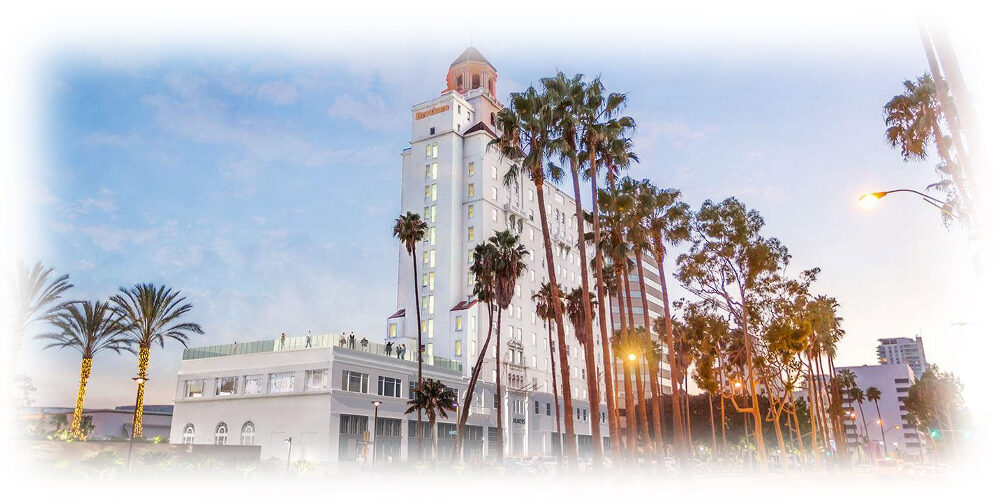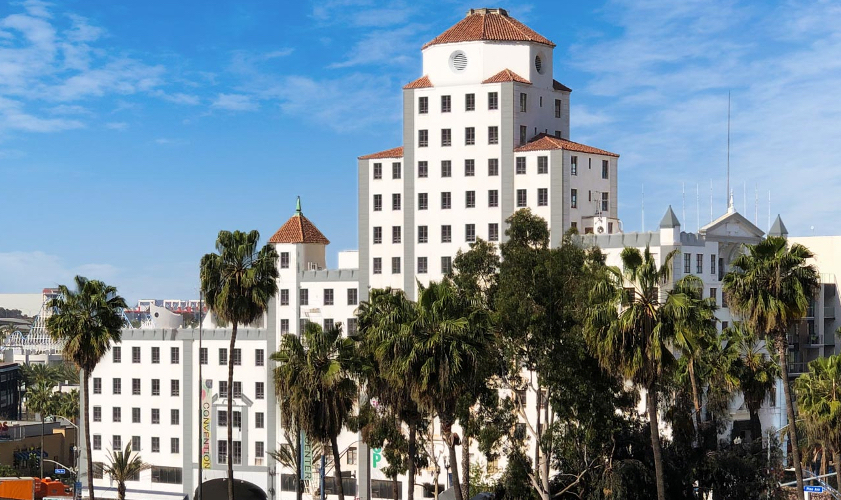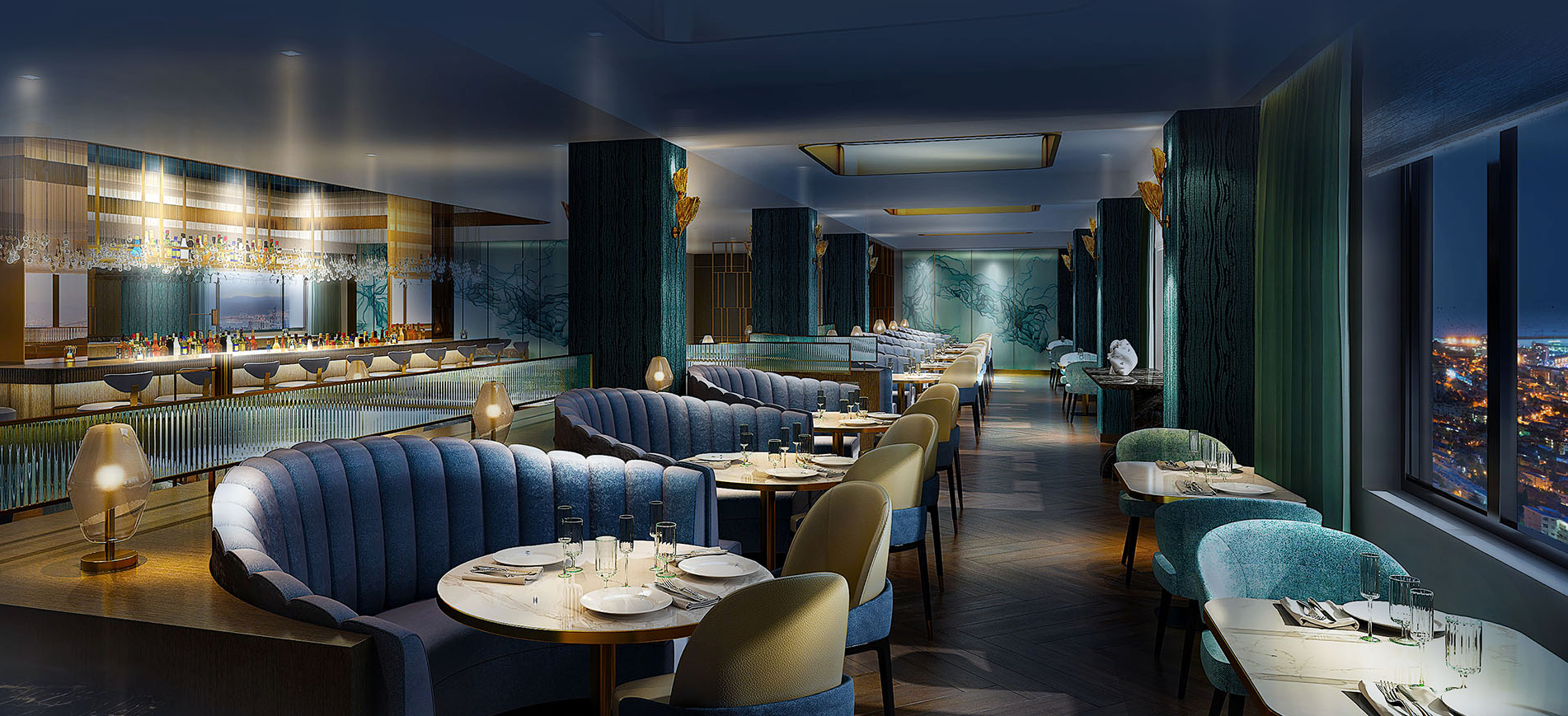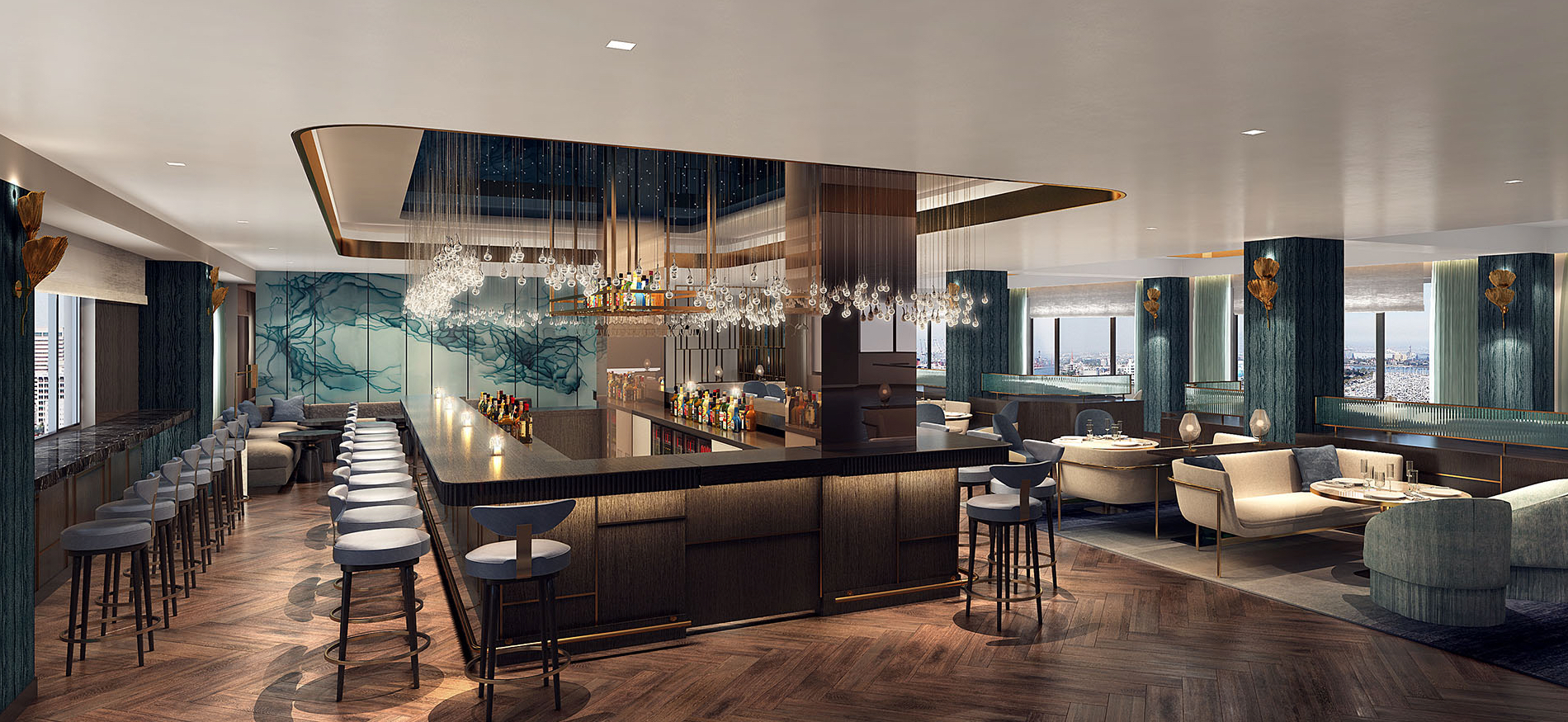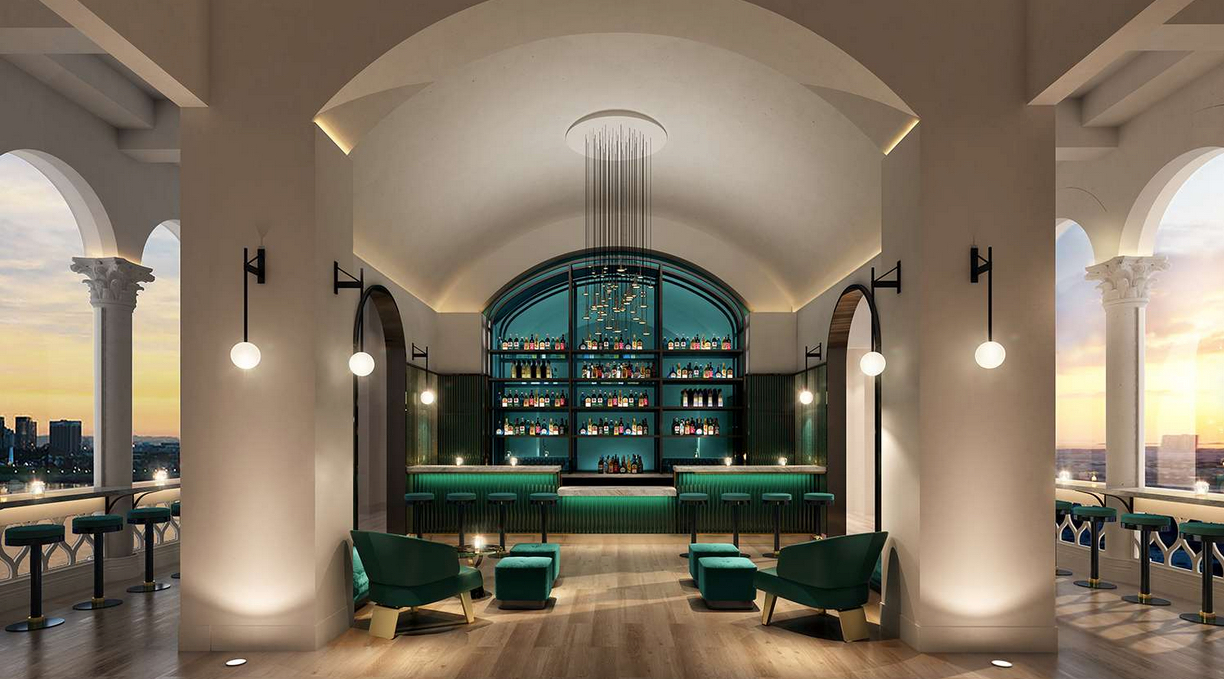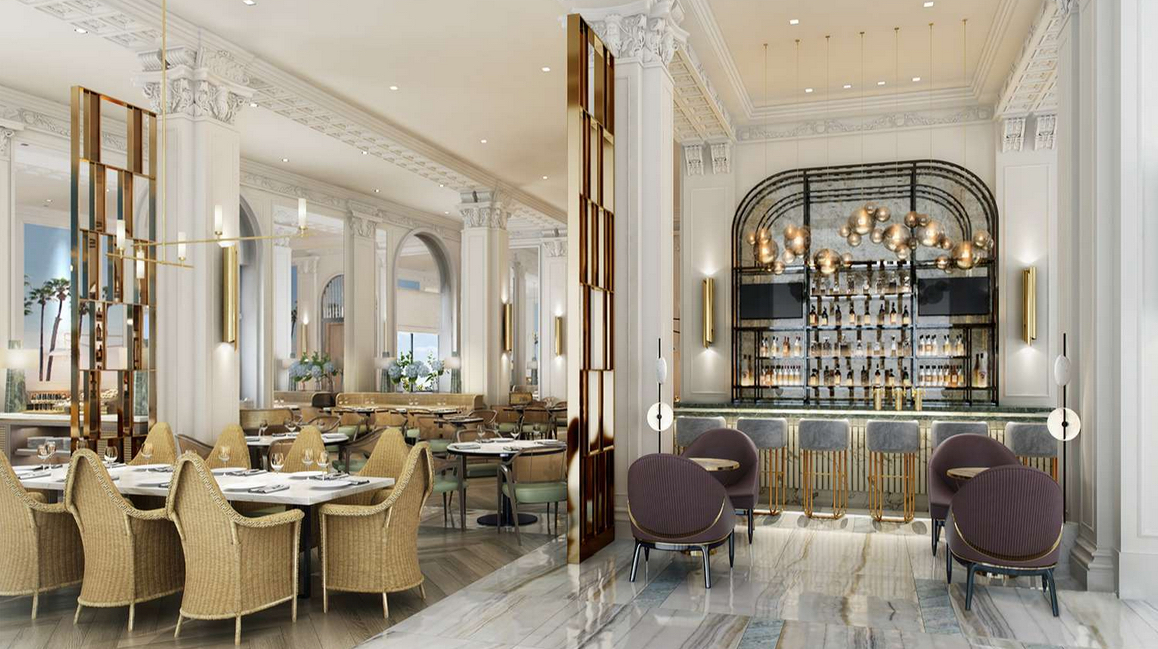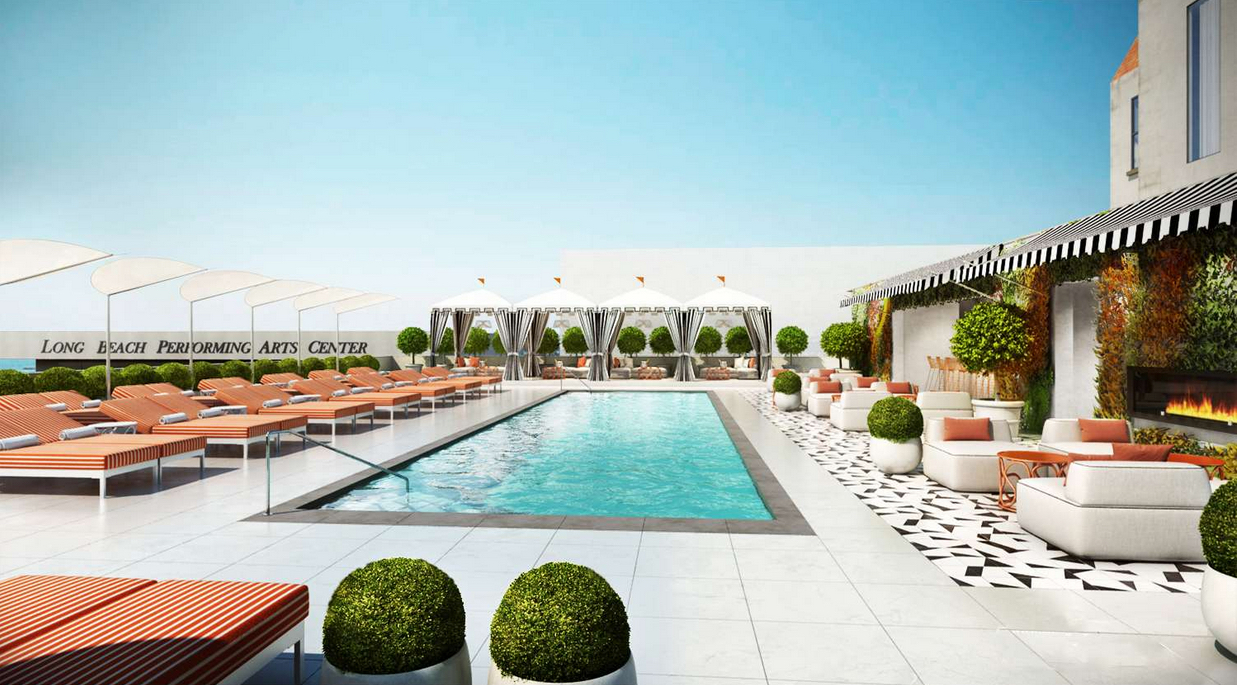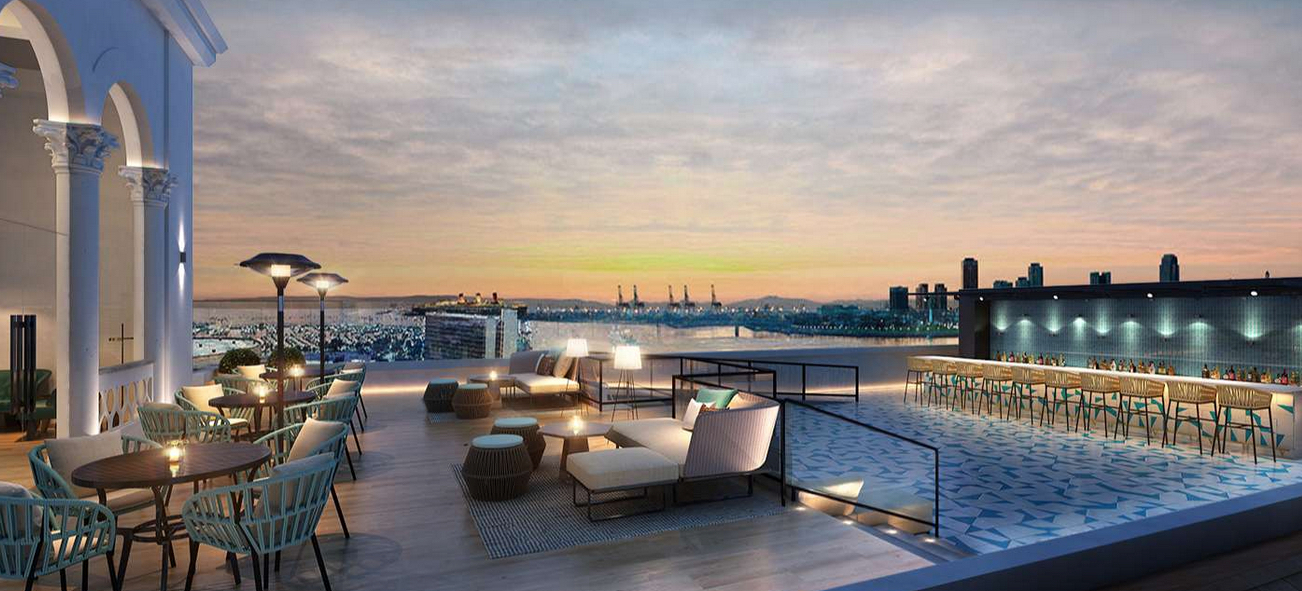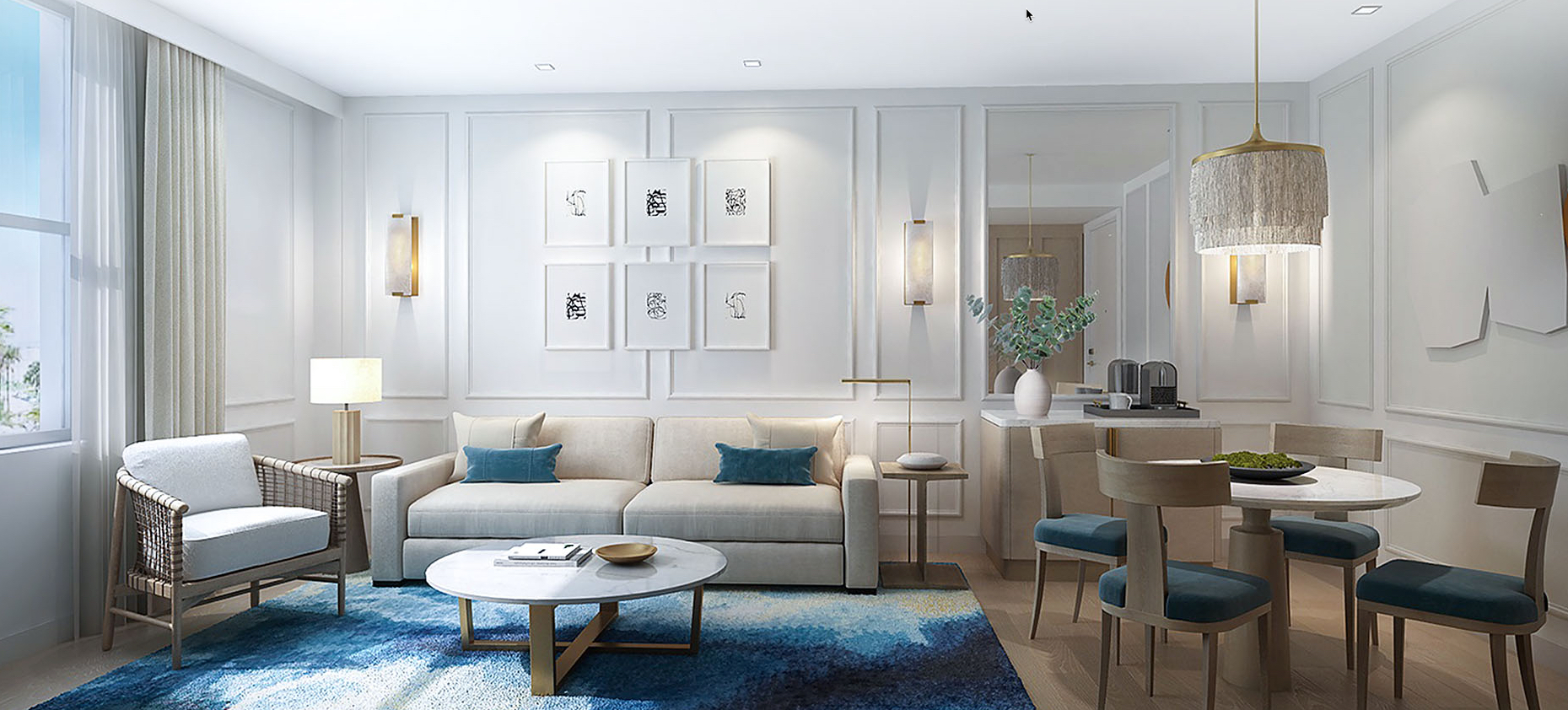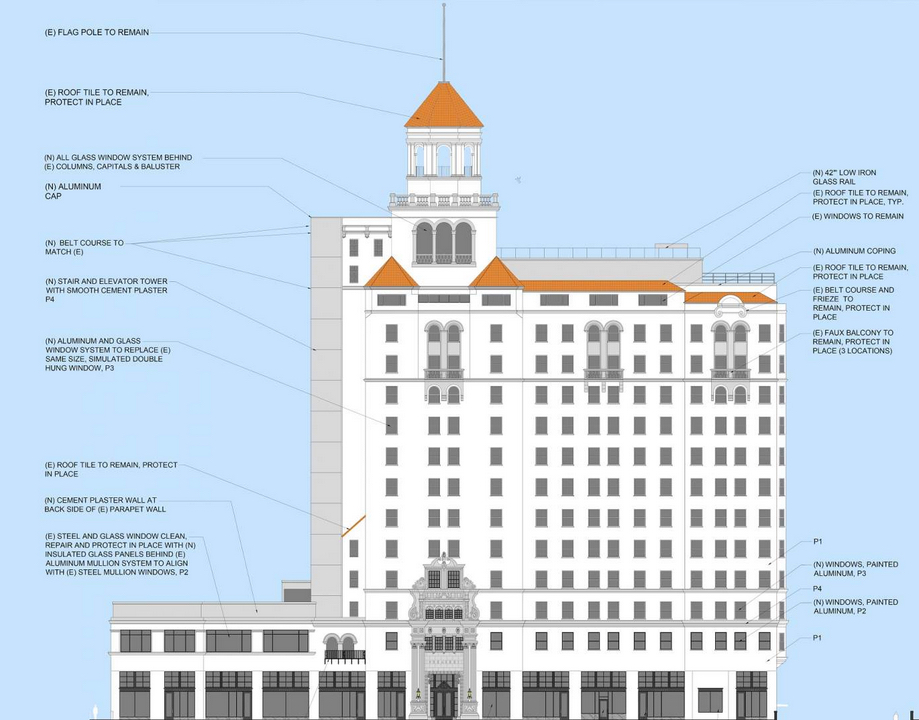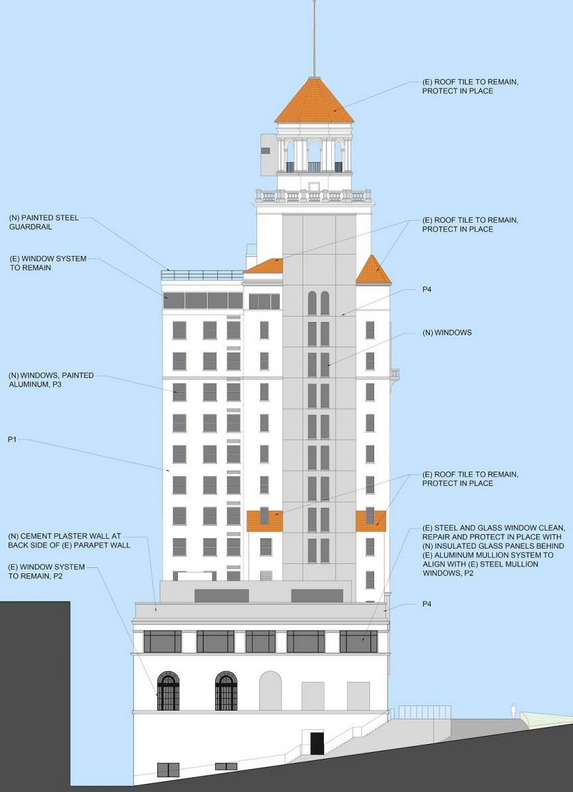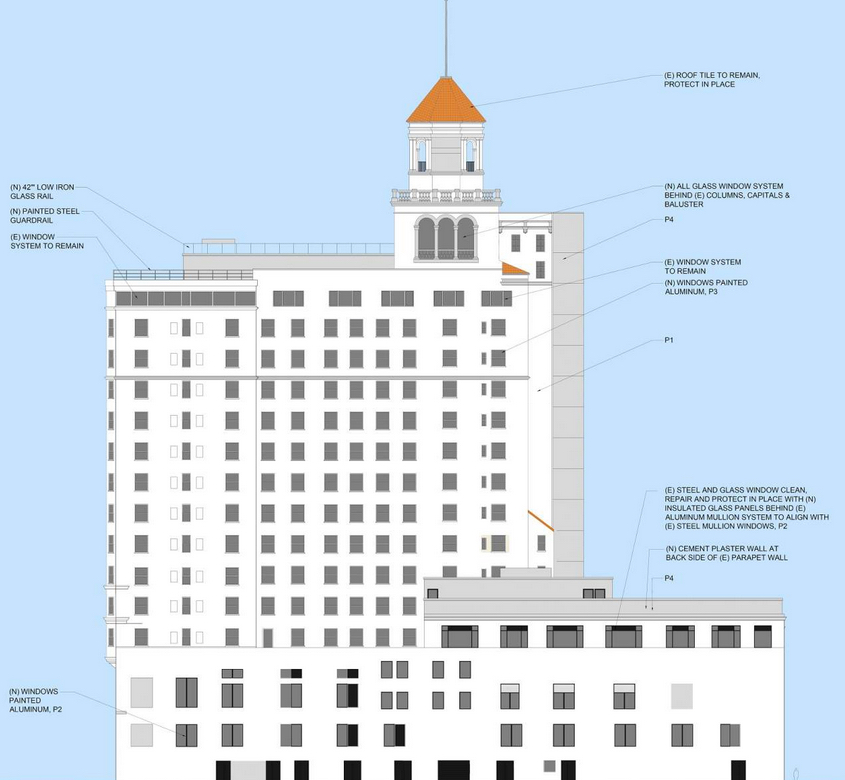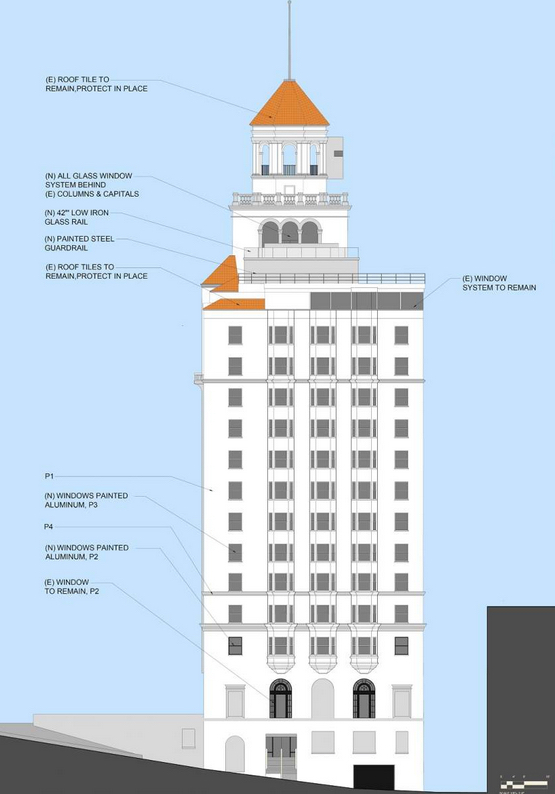The hotel was expected to “be the means of attracting thousands of people to Long Beach.”
Years of decline (1929–1935)
Less than a year after its opening, the hotel was sold by Fred Dunn to an unnamed group of investors from Pasadena, Los Angeles, and New York. The sale price in 1927 was reported to be $1,750,000. The new owners announced plans for extensive remodeling, including the closure of several dining rooms and conversion of the ballroom into a summer garden.
The onset of the Great Depression and the 1933 Long Beach earthquake pushed the Breakers into bankruptcy. The 1933 earthquake, which resulted in over 100 deaths, caused only minor damage to the Breakers, but the widespread destruction in Long Beach caused major damage to the city’s tourist trade. The hotel served as the headquarters for the Red Cross relief efforts following the earthquake. In August 1934, the Los Angeles Times reported that the hotel had sustained a significant operating loss in 1933 and was delinquent on its real estate and personal properties taxes for the past three years.
Hilton years and Sky Room (1938–1947)
In 1938, the hotel was purchased by Conrad Hilton at a reported cost of $150,000 and $35,000 in back taxes. Hilton turned the Breakers into the eighth hotel in the Hilton chain. Hilton spent at least $200,000 on renovations and converted the penthouse into the Sky Room.
In 1938, Hilton opened the Sky Room atop the hotel, and it became one of the most popular restaurants gathering spots in Southern California. Movie stars such as Clark Gable, Errol Flynn, Rita Hayworth, Cary Grant and John Wayne were said to have been customers at the Sky Room during the Hilton years.
During World War II, two pillboxes with gun-mountings were installed on the rooftop for harbor defense, and the Sky Room became the official Air watch headquarters for Long Beach harbor. One of the pillboxes and gun mountings remained intact on the roof as late as 1991.
Wilton (1947–1961)
In 1947, Hilton sold the hotel to Frank Fishman, who renamed it the Wilton Hotel. The hotel remained the “Wilton” for 14 years. During the 1950s, the hotel changed ownership several times, and promises to spend hundreds of thousands of dollars to remodel the aging hotel were not kept.
Breakers International and closure (1961–1964)
In 1961, the hotel was purchased by Fred Miller. Miller was one of the founders of Flying Tigers Airlines and purchased US Airlines in 1951. After buying the Breakers in 1961, Miller renamed the hotel the Breakers International and spent $1.25 million refurbishing the property from top to bottom. Miller reportedly hoped to “recapture, for Long Beach, the beauty, dignity and service of the city’s greatest hotel.” However, even with Miller’s efforts, he was not able to turn around the fortunes of the Breakers. In 24 months as owner of the hotel, Miller reported that he lost half of his net worth. In November 1963, Miller gave up and closed the hotel.
In January 1964, the hotel was sold at auction to pay off the hotel’s creditors. Despite an appraised value of $4.3 million for the land and improvements, the property sold for $1.75 million. The high bidder, Long Beach realtor Harvey Miller, announced plans to convert the structure into a retirement hotel. However, it remained shuttered for nearly three years and was referred to as “the West Coast’s largest pigeon roost.”
Retirement hotel (1967–1982)
The hotel remained closed for three years as plans to convert it into a retirement hotel stalled. In September 1966, the hotel re-opened as a combination permanent retirement hotel and transient hotel for overnight guests. By January 1967, the property was occupied 70% by permanent residents who had the option of an American plan at $175 per month including hotel conveniences and three meals a day, or a European plan at $115 a month without meals.
In 1975, the residential retirement hotel was refurbished again. The renovations included all new carpets, drapes, furnishings, automated elevators, and an updated phone system. The owners stated their intention to create the ultimate in retirement living for the senior citizens of Long Beach.
In 1978, New Breakers Hotel Company sold the property to Stoneridge Management Company for less than $3 million.
Re-conversion to hotel use (1986–1988)
In 1986, the hotel was re-converted into a tourist hotel and placed under the management of the same company responsible for management of the city’s major tourist destinations, the Spruce Goose and the Queen Mary. Before its re-opening in 1986, the hotel had undergone a three-year $15 million renovation and restoration.
The new version of the Breakers opened with 242 guest rooms, including 20 suites, a restaurant and night club on the top floor, and a ballroom restored to its original 1920s decor. The Sky Room, which had been given a Polynesian theme by prior owners, was renovated in an Art Deco style. At the time of the re-opening, the Los Angeles Times wrote: “Its 60 years have been a roller-coaster ride of ups and downs, prosperity and poverty, bright lights and gloomy emptiness.”
The excitement about the Breakers’ restoration was short-lived as the hotel failed to draw sufficient guest turn-out to remain in the black. The hotel closed its doors again in January 1988.
Designation as Historic Landmark (1989)
In 1989, the Breakers, still vacant after its closure in 1988, was designated as a Long Beach Historical Landmark, requiring approval from the Cultural Heritage Commission before making any major changes in the building’s appearance.
Senior citizen housing (1990–2015)
The property was purchased following its 1988 closure by Ocean Boulevard Associates, which spent $23 million on earthquake retrofitting and restoring its 1920s-style Romanesque architecture. The building re-opened in November 1990 as an “Assisted Living” Residence for senior citizens. As of October 1991, the Breakers had 38 residents with an average age of 84, paying rents starting at $1,000 a month, including three meals a day, housekeeping and local transportation. An in-house Medical Staff provided medication administration and routine activities for those in need of leadership. The facility closed in March 2015 after state authorities revoked its license.
Renovated Sky Room (1997–2018)
In 1997, the Sky Room, originally developed by Conrad Hilton in 1938, was restored and re-opened by the property’s new owner Bernard Rosenson. Rosenson restored the Art Deco look of the Sky Room and redesigned it to focus on its 360-degree view. The new Sky Room offered an “ultra-retro menu” and music by a swing and jazz band called the Sky Room Orchestra. The restaurant had a separate entrance and a special dedicated elevator, so that it would not break California laws forbidding restaurants from operating in retirement homes. The restaurant remained open as a separate concessionaire after the retirement home closed and the building was sold, but both the Sky Room and the adjoining Cielo bar closed in April 2018, in preparation for the structure’s conversion back to a hotel.
Restoration as a hotel (2017–Present)
In November 2017, Pacific6, a Long Beach based investment and development partnership, assembled by Long Beach businessman and philanthropist John Molina with partners Kevin Davis, Robert Gordon, Jon Heiman, Todd Lemmis and David Telling, purchased the building and announced their intentions to fully restore the Breakers and operate it as a 185-room luxury boutique hotel.
In April 2021, Pacific 6 announced that they had partnered with hospitality expert and television personality Anthony Melchiorri on the renovation, which is expected to cost $150 million, with a reopening set for 2023.

